In around three weeks, if fate smiles upon us all in a way that it hasn't for most of 2020, we will have regular-season baseball. We will have a little more than a three-month sprint to crown a World Series champion, one whose validity will be debated forever after. A 60-game season isn't what any of us in and around baseball wanted. Sixty games is what we got.
Before the world seemed to stop spinning in March, we sized up the baseball world through the prism of our recurring Stock Watches, which were supposed to be the first of the annual nine-month run of the concept. With everything shut down since then, there has been no reason to offer a new one. Even now, as teams have announced their player pools for the summer camps that kick off later this week and the transaction freeze across baseball has been lifted, the rosters and depth charts for the 30 clubs have changed very little. Yet so much about the truncated season will be different, and some of those things change the probabilities even before any significant roster shuffling can take place.
What has changed since February:
• Recent injuries and suspensions (that is, Chris Archer, Noah Syndergaard)
• Injury returnees (that is, Justin Verlander, Aaron Hicks, Shohei Ohtani as a pitcher)
• Full-time designated hitters for National League clubs
• A 60-game schedule
• Various playing-time tweaks.
Of these, the big one is the schedule. We don't know exactly what it's going to look like, since MLB is still working through logistical issues before releasing the full slate. We do know the general parameters: 40 games of divisional play, 20 games of interleague play between each division's geographical counterpart, with six of those games coming in the form of home-and-home series between assigned interleague rivals, such as Mets-Yankees, White Sox-Cubs and the like.
Still, we know that the team-to-team differences in opponent strengths will be higher this year than in any other. During most years it's negligible, with the bulk of the team-to-team variance explained by whatever difference there might be in aggregate strength between the American League and the National League in a given season. This year, the differences are greater, which matters given that teams will be competing for wild-card slots against teams that they won't face during the regular season.
Even more than opponent strength is the length of the schedule. Shortening a standard 162-game season by 102 games has two generally observed effects: It makes the best teams less likely to win the World Series, and it makes the worst teams more likely to steal a title. The pecking order of the teams remains unchanged from a projection standpoint. The Dodgers and Yankees are still many, many times more likely to win it all than the Orioles and Marlins. However, the shorter the season, the more of a factor randomness becomes. This season carries with it the distinct possibility of being determined more by sheer randomness than any that has come before it.
This is an attempt to put that notion into some context, while also accounting for whatever roster changes have taken place. The effects of the short schedule from a simulation standpoint aren't as stark as you might fear, which is good. For example, the Yankees carried a 93% chance of making the playoffs when we last did this exercise around Valentine's Day. Now we can add a larger percentage chunk of playing time for then-ailing Bombers such as Aaron Hicks, James Paxton and Aaron Judge, while at the same time removing the injured Luis Severino. That helps, but the tough, East-only schedule New York will face hurts. The end result is an 86% shot at the playoffs for the Yankees. The changes matter, but the landscape hasn't become unrecognizable.
What we still don't know:
• How home advantage will or won't be affected by the absence of fans
• How many innings starting pitchers will get, especially at the outset of the season
• How NL teams will dole out playing time for their unplanned DH slots
• Which players will test positive for COVID-19 in the days and weeks to come
• The exact layout of the 2020 schedule
• The identity of players who decide to opt out of playing this season (Note: The simulations referred to below were run before players such as Arizona's Mike Leake and Washington's Ryan Zimmerman announced that they would not participate in the coming season.)
That is only the tip of the iceberg. But we've made our best guesses at accounting for all of this in making the following calculations.
A quick aside: In an alternate universe where 2020 didn't go horribly askew, more than 1,200 games would already be in the books, and they would have featured around 3,300 home runs, 1,337 stolen bases and 1,700 double plays. We won't get any of that stuff back. Like many others, I've been playing out the halted season in simulation, watching narratives unfold that, had they occurred in real life, would have definitely been worth writing about. With that in mind, in the commentary for each team, I'm going to touch on some of those sim-based narratives that might emerge in a different fashion in the dash of a season to come. (Note: The simulated season referred to below has been conducted with Action! PC Baseball, a simulation software package published by Dave Koch Sports.)
Hopefully, some of these possible storylines suggest part of the excitement that can be salvaged from a season that seemed at times like it would never happen -- and even now approaches with the most tentative of steps.
 1. Los Angeles Dodgers
1. Los Angeles Dodgers
Power rating: 100.5
Current win forecast: 37.9 | Change from February: -0.1
Spring -- Division%: 93.14 | Playoff%: 97.91
Spring -- Pennant%: 42.98 | Title%: 23.06
Current -- Division%: 82.11 | Playoff%: 91.79
Current -- Pennant%: 39.92 | Title%: 23.11
The Dodgers' title odds actually improved, even as their other probabilities predictably regressed to the mean given the 60-game sample. While this might have simply been a fluke, one possible explanation is that the Dodgers won a greater portion of their World Series matchups because of weaker competition. The Dodgers made the World Series in 3,992 of the 10,000 Monte Carlo simulations. Of those, 2,277 of their Fall Classic matchups came against the Yankees and Astros. But that's still just 57% of L.A.'s pennant seasons. They played every AL team in at least one run of the iteration, including the Tigers and the Orioles (once each).
Anyway, the chief on-field narrative for the Dodgers has always been about the potential impact of Mookie Betts, and that hasn't changed. In the simulated season -- which we'll refer to from here on out as Sim Prime, to set it apart from the Monte Carlo iterations -- Betts has batted .330 as the Dodgers' leadoff hitter. His presence has contributed to Cody Bellinger's NL-best total of 76 RBIs. That is a dynamic that Dodgers fans hope to see time and again in the weeks to come.
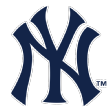 2. New York Yankees
2. New York Yankees
Power rating: 100.1
Current win forecast: 37.4 | Change from February: -0.2
Spring -- Division%: 75.26 | Playoff%: 93.27
Spring -- Pennant%: 31.53 | Title%: 19.68
Current -- Division%: 68.71 | Playoff%: 86.41
Current -- Pennant%: 29.63 | Title%: 17.99
With Severino out, Gerrit Cole is the only Yankees hurler to top 100 innings thus far in Sim Prime. Cole is 11-5 with a 3.10 ERA and 12.4 strikeouts per inning, which are all fine totals. Beyond him, though, the rotation has been a scramble for Sim Prime Yankees manager Aaron Boone, who only recently was able to insert James Paxton into his rotation. Still, the simulated Yankees have been strong throughout, with a 51-33 mark leading the AL East -- but they've been blistering hot since Paxton's return. Because of the layoff, the real Yankees should get to see a Cole-Paxton top-of-the-rotation punch for the entire regular season.
 3. Houston Astros
3. Houston Astros
Power rating: 99.5
Current win forecast: 36.9 | Change from February: +0.1
Spring -- Division%: 75.47 | Playoff%: 89.89
Spring -- Pennant%: 29.11 | Title%: 17.76
Current -- Division%: 66.62 | Playoff%: 83.00
Current -- Pennant%: 27.05 | Title%: 15.71
Since the sim world doesn't know about the Astros' sign-stealing scandal, the more tangible storyline revolves around Houston's new rotation sans Cole. Justin Verlander and Zack Greinke have been really good, as you'd expect, going a combined 21-6 in Sim Prime. In fact, Verlander's 2.31 ERA leads the AL, while Greinke leads the league in wins with his 13-2 mark. The other pitchers who have started for Houston have gone 15-19 as the Astros have fallen well off the pace of the torrid Athletics in the simulated AL West. Houston's thin rotation depth chart could be a major storyline, as there isn't much time to sort out such issues in a 60-game slate.
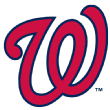 4. Washington Nationals
4. Washington Nationals
Power rating: 92.5
Current win forecast: 34.3 | Change from February: 0.0
Spring -- Division%: 44.31 | Playoff%: 77.72
Spring -- Pennant%: 16.42 | Title%: 7.09
Current -- Division%: 43.44 | Playoff%: 68.40
Current -- Pennant%: 15.39 | Title%: 7.47
Real-world question: How will the Nationals make up for the loss of Anthony Rendon? Virtual-world answer: Starlin Castro. It's not actually that straightforward, but after Asdrubal Cabrera got off to a slow start, I amped up the playing time for young Carter Kieboom at third base. Kieboom has been just so-so. But Castro has been terrific at the keystone, hitting .315/.351/.481 as Washington's everyday second baseman. That might not be how Dave Martinez plays it, but it's worth remembering how solid and consistent Castro has been over the past decade, and it's worth considering how his skill set might complement a deep Nationals position group.
 5. Atlanta Braves
5. Atlanta Braves
Power rating: 92.4
Current win forecast: 33.7 | Change from February: 0.0
Spring -- Division%: 33.04 | Playoff%: 70.68
Spring -- Pennant%: 12.84 | Title%: 5.13
Current -- Division%: 33.36 | Playoff%: 62.22
Current -- Pennant%: 12.72 | Title%: 6.04
Who will seize third base for the Braves in the wake of Josh Donaldson's departure? The answer in Sim Prime has mostly been ... no one. Johan Camargo has received the most playing time there, but he has put up a pedestrian .721 OPS with minus-6 defensive runs saved. Austin Riley has a .767 OPS and a minus-1 DRS. I've just recently moved Camargo into a utility role on the depth chart. With the NL East shaping up to be pretty tightly packed, Brian Snitker and his brethren won't have a half-season of results to inform when or if to make that kind of move. Adjustments based on subjective observation could swing a race in the short campaign.
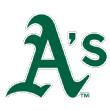 6. Oakland Athletics
6. Oakland Athletics
Power rating: 89.8
Current win forecast: 32.9 | Change from February: -0.3
Spring -- Division%: 17.51 | Playoff%: 50.56
Spring -- Pennant%: 6.54 | Title%: 3.30
Current -- Division%: 21.38 | Playoff%: 49.62
Current -- Pennant%: 6.97 | Title%: 3.16
As mentioned, the A's have been hot, and their Sim Prime 54-30 mark is the AL's best. The exciting part of this for Oakland fans has been that other than Ramon Laureano (20 homers, .979 OPS), the stellar mark isn't a product of a string of over-projection showings. It's simply Oakland's formula working. Oakland's 3.45 staff ERA is the league's best, and it is driven by a 2.80 bullpen ERA from the Athletics' deep staff of firemen.
 7. Minnesota Twins
7. Minnesota Twins
Power rating: 89.5
Current win forecast: 35.2 | Change from February: +1.1
Spring -- Division%: 50.83 | Playoff%: 65.60
Spring -- Pennant%: 10.35 | Title%: 4.96
Current -- Division%: 49.92 | Playoff%: 70.28
Current -- Pennant%: 11.71 | Title%: 5.21
The Twins have been hampered by some bullpen problems in Sim Prime, though they remain solidly in the AL Central race. Their strength? It's, well, strength. After the Twins' record-breaking homer barrage of 2019, they went out and added Josh Donaldson. The simulated result is no surprise, as Minnesota once again tops the majors in circuit clouts. Donaldson has been the best of the bunch, with a team-high 27 dingers, even though he missed several games early in the season because of an injury.
 8. Tampa Bay Rays
8. Tampa Bay Rays
Power rating: 89.3
Current win forecast: 33.3 | Change from February: -0.1
Spring -- Division%: 13.91 | Playoff%: 52.64
Spring -- Pennant%: 5.82 | Title%: 2.73
Current -- Division%: 20.51 | Playoff%: 50.93
Current -- Pennant%: 7.34 | Title%: 3.41
One of baseball's most improved players last season was Rays outfielder Austin Meadows. His avatar carried that rate of improvement over to Sim Prime -- and then some. Sim Prime-edition Meadows racked up 18 homers by the end of April and is tied with Juan Soto for the big league lead with 33. In fact, the sim software has rated Meadows as the AL MVP since early in the season.
 9. Cleveland Indians
9. Cleveland Indians
Power rating: 87.3
Current win forecast: 34.3 | Change from February: +0.8
Spring -- Division%: 39.43 | Playoff%: 55.93
Spring -- Pennant%: 7.69 | Title%: 3.61
Current -- Division%: 35.89 | Playoff%: 60.91
Current -- Pennant%: 8.17 | Title%: 3.45
The Indians' Sim Prime counterparts are hanging in the thick of the playoff race, mostly thanks to Cleveland's top-tier starting rotation. Getting that group ramped up to a regular workload as soon as possible will be the key early-season project for Terry Francona. His offense, however, looks like one with a lot of redundant skill sets beyond the all-around excellence of Francisco Lindor and Jose Ramirez. Good power, lots of walks, low batting averages. Of the 10 players with at least 100 at-bats so far for Sim Prime Cleveland, seven of them are hitting below .250, including five under .230.
 10. New York Mets
10. New York Mets
Power rating: 85.7
Current win forecast: 30.8 | Change from February: -1.4
Spring -- Division%: 15.87 | Playoff%: 50.81
Spring -- Pennant%: 6.72 | Title%: 2.51
Current -- Division%: 12.08 | Playoff%: 34.49
Current -- Pennant%: 4.65 | Title%: 1.74
My projection system has liked the Mets since the Hot Stove season, which seems like eons ago. That projected roster has not fared well in Sim Prime, with a 35-49 record putting New York closer to Miami in the NL East than Washington. Pete Alonso (.304, 26 homers, 61 RBIs) has had a nice follow-up to his rookie of the year campaign, and Jeff McNeil (.327) has been good, but they've had little help. The Mets don't have an over-.500 starting pitcher, as even Jacob deGrom is just 7-7. His ERA (3.13) and strikeout total (149) rank among the NL leaders. It's just that the real-life bad luck that deGrom has endured in recent seasons has followed him into the virtual world.
 11. Boston Red Sox
11. Boston Red Sox
Power rating: 85.4
Current win forecast: 31.1 | Change from February: -2.0
Spring -- Division%: 10.64 | Playoff%: 45.78
Spring -- Pennant%: 4.94 | Title%: 2.57
Current -- Division%: 9.53 | Playoff%: 28.42
Current -- Pennant%: 3.33 | Title%: 1.27
Even in a 60-game slate, the challenge for Ron Roenicke to cover the schedule with enough quality innings seems immense, especially with Chris Sale out for the season. Boston's Sim Prime staff has put up an ugly 5.32 rotation ERA. That is reflected in the change in Boston's playoff chances noted above. The spring set (46%) was based on having Sale; the current ones (28%) are not.
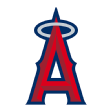 12. Los Angeles Angels
12. Los Angeles Angels
Power rating: 84.4
Current win forecast: 30.1 | Change from February: -0.7
Spring -- Division%: 5.07 | Playoff%: 18.57
Spring -- Pennant%: 1.83 | Title%: 0.66
Current -- Division%: 7.43 | Playoff%: 20.76
Current -- Pennant%: 2.32 | Title%: 0.96
I'm the manager of every team in the sim season, which is nice, especially since there are no general managers, owners or sports radio talkers to harangue me. In Sim Prime, I allowed Albert Pujols to put up a .289 OBP for six weeks before benching him. I promoted Jo Adell at the start of the season, and he has put up an .814 OPS. None of it has helped all that much, as the Halos are just 36-47. Alas, there just isn't enough pitching despite good seasons from starters Ohtani (2.94 ERA over eight outings) and Andrew Heaney (2.35). Still: Will the Angels make the tough decisions early in an effort to maximize their 60-game chances?
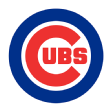 13. Chicago Cubs
13. Chicago Cubs
Power rating: 84.1
Current win forecast: 32.5 | Change from February: +1.2
Spring -- Division%: 39.16 | Playoff%: 46.84
Spring -- Pennant%: 6.11 | Title%: 1.83
Current -- Division%: 35.54 | Playoff%: 50.44
Current -- Pennant%: 6.96 | Title%: 2.41
The entire NL Central has more or less performed according to form in Sim Prime. For the Cubs, a big issue has been the subpar performance from Jon Lester, who is 5-8 with a 5.95 ERA and 1.46 WHIP. (One can just imagine what the real Lester would say if confronted with these numbers, which are based on a simulated season that is in turn based on statistical projections.) The Cubs don't have much in the way of rotation depth, but they do have a front four (Lester, Kyle Hendricks, Yu Darvish, Jose Quintana) long on name recognition and remuneration. Chicago needs that quartet to perform, which means Lester will have to halt what looked last season like the beginning of a career slide.
 14. Philadelphia Phillies
14. Philadelphia Phillies
Power rating: 83.8
Current win forecast: 30.6 | Change from February: +0.0
Spring -- Division%: 6.78 | Playoff%: 27.49
Spring -- Pennant%: 3.02 | Title%: 1.00
Current -- Division%: 11.00 | Playoff%: 30.56
Current -- Pennant%: 3.44 | Title%: 1.10
As the czar of everything that happens in Sim Prime, I promote top prospects without regard to service time considerations, calling up most of the top guys simply to become more familiar with their strengths and weaknesses. I've given Spencer Howard seven starts for the Phillies, and his 3.48 ERA ranks third among Philadelphia's starters, behind Aaron Nola and Jake Arrieta. Zack Wheeler (6-10, 4.50 ERA) has disappointed, but if his real-life self doesn't follow suit and the Phillies are aggressive with Howard, you could see that rotation developing into one of the league's best.
 15. St. Louis Cardinals
15. St. Louis Cardinals
Power rating: 83.6
Current win forecast: 32.3 | Change from February: +1.4
Spring -- Division%: 31.92 | Playoff%: 38.98
Spring -- Pennant%: 4.81 | Title%: 1.33
Current -- Division%: 30.99 | Playoff%: 46.62
Current -- Pennant%: 6.25 | Title%: 2.34
The sim Cards -- see what I did there? -- have more or less picked up where last year's real Redbirds left off. St. Louis holds a narrow lead over the Cubs in the NL Central. The big question over this roster is how the hole opened up by the loss of left fielder Marcell Ozuna is filled. Fortunately for manager Mike Shildt, his problem seems to be more one of picking from an abundance of options rather than having a lack of them. My decision in Sim Prime was to turn the spot over to prospect Dylan Carlson. He has been up and down, but his 12 homers rank fourth on the Cardinals, and their lineup certainly looks a lot more dynamic with him in it. But given that St. Louis has other solid options, will the Cardinals roll the dice on the hope that Carlson provides some immediate upside? As with all decisions of this type across baseball, there simply isn't much time to correct for a wrong call.
 16. San Diego Padres
16. San Diego Padres
Power rating: 83.3
Current win forecast: 30.9 | Change from February: 0.0
Spring -- Division%: 4.71 | Playoff%: 31.04
Spring -- Pennant%: 2.51 | Title%: 0.72
Current -- Division%: 10.74 | Playoff%: 31.44
Current -- Pennant%: 3.32 | Title%: 1.26
Early on in Sim Prime, the Padres were one of the faux season's great stories, but they've since slowed their virtual roll. San Diego's depth has been apparent as the Pads have clung to one of the NL's wild-card spots all season. Given the forecast noted here and the one-in-three playoff odds that haven't changed much since February, it would be really surprising if the real Padres aren't a part of the playoff chase into the season's final days.
But if they are ... a noted sore spot on the Padres' dossier would stand out in a close race. In Sim Prime, a certain much-discussed player leads the Padres with 327 at-bats, even though he has just a .665 OPS and minus-4 defensive runs saved. It would be a whole lot easier to be excited about the up-and-coming Padres if Eric Hosmer produced somewhere near the level of what you'd expect from someone with his contract.
 17. Arizona Diamondbacks
17. Arizona Diamondbacks
Power rating: 80.4
Current win forecast: 29.0 | Change from February: -0.4
Spring -- Division%: 1.78 | Playoff%: 15.71
Spring -- Pennant%: 1.12 | Title%: 0.32
Current -- Division%: 5.09 | Playoff%: 17.17
Current -- Pennant%: 1.54 | Title%: 0.42
After a 16-21 start, the Sim Prime D-Backs have gone 29-18 behind one of the NL's most potent offenses and have hovered near the top spot in the NL wild-card chase for the past few weeks. That result is a bit more optimistic than the portrait painted above by my projection system and the Monte Carlo iterations. Subjectively, I think the sim result is more likely than the sub-.500 forecast. Still, those numbers were generated before Monday's announcement that Leake would not participate this season. With him out of the equation, Torey Lovullo can still roll out a rotation of Madison Bumgarner, Zac Gallen, Robbie Ray, Merrill Kelly and Luke Weaver. Nevertheless, Arizona's margin for error is squeezed by Leake's absence. That's not to point the finger at Leake for not playing. No one who isn't comfortable doing it should play, simple as that. But there will be on-the-field ramifications from these decisions.
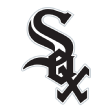 18. Chicago White Sox
18. Chicago White Sox
Power rating: 80.4
Current win forecast: 31.3 | Change from February: +0.7
Spring -- Division%: 9.55 | Playoff%: 17.95
Spring -- Pennant%: 1.55 | Title%: 0.61
Current -- Division%: 12.87 | Playoff%: 28.71
Current -- Pennant%: 2.11 | Title%: 0.74
Forget this forecast, even if it is the most rational baseline of expectation for this year's White Sox. During Sim Prime, I set the rosters and lineups and such but mostly let the software play the games, leaving me to examine the results. However, I do play out most of the games involving the White Sox and Cubs. And the White Sox have been an absolute gas to manage, rolling to a 51-34 start and a first-place showing in the AL Central.
Again, I don't have to worry about service time issues, so I've had Nick Madrigal and Luis Robert in the lineup from the get-go. Madrigal has delivered a .383 OBP and 13 stolen bases while leading off. Robert has been a phenom, with 21 homers, 66 RBIs, 17 stolen bases and a .956 OPS. Yasmani Grandal is an MVP candidate, but Yoan Moncada isn't far behind. The lineup is so deep that Edwin Encarnacion has batted seventh at times. Eight players have already reached double digits in homers, and four have nine or more stolen bases.
Maybe the sim is jumping the gun, but at some point this version of the White Sox is going to be one of the must-watch teams in MLB. And in the run of 10,000 Monte Carlo iterations used to compile the probabilities, the White Sox and Cubs met in the World Series 22 times. Just sayin'.
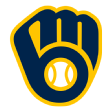 19. Milwaukee Brewers
19. Milwaukee Brewers
Power rating: 80.1
Current win forecast: 30.5 | Change from February: +0.9
Spring -- Division%: 17.61 | Playoff%: 23.40
Spring -- Pennant%: 2.29 | Title%: 0.59
Current -- Division%: 16.16 | Playoff%: 27.73
Current -- Pennant%: 2.90 | Title%: 0.89
After a ton of offseason turnover, it was going to take some time to get a feel for the 2020 Brewers. And I can't say that Sim Prime has helped all that much. True to form, Milwaukee has used dozens of players to scratch out an over-.500 mark. Keston Hiura (.956 OPS) has emerged as a centerpiece player alongside Christian Yelich and a Lorenzo Cain who has struggled (.632 OPS) at the plate. Still, I need to see some real games to gain a feel for how Craig Counsell is going to assemble all of these pieces into a portrait that makes sense. Of course, if anyone can do it, it's him.
 20. Texas Rangers
20. Texas Rangers
Power rating: 79.9
Current win forecast: 28.6 | Change from February: -0.6
Spring -- Division%: 1.94 | Playoff%: 7.88
Spring -- Pennant%: 0.57 | Title%: 0.23
Current -- Division%: 4.24 | Playoff%: 11.97
Current -- Pennant%: 1.04 | Title%: 0.30
The Rangers' new ballpark has been waiting for its close-up longer than Norma Desmond. How it will affect the numbers of Texas' players is an area of inquiry that we won't be able to address for some time. Even one full season is often not enough to tell us how a park is going to play. Now Texas' future projections will be based on a 30-game sample of home cooking. Forecasting problems! Anyway, Joey Gallo is hitting .182 in Sim Prime, as his bat-to-ball improvement last season has regressed to previous levels. Whether that will turn out to be prescient remains to be seen, but at least that much we should be able to assess in the new venue.
 21. Cincinnati Reds
21. Cincinnati Reds
Power rating: 78.6
Current win forecast: 30.1 | Change from February: +1.7
Spring -- Division%: 9.01 | Playoff%: 12.47
Spring -- Pennant%: 0.91 | Title%: 0.22
Current -- Division%: 14.12 | Playoff%: 25.21
Current -- Pennant%: 2.20 | Title%: 0.73
People seem to be pretty excited about the Reds in a short season, but I'm not sure I see it. They could clearly emerge to win the division and it would barely qualify as a surprise. But I look at the roster as one with a lot of players who are good in a vacuum, but I'm not sure how they will coalesce into a cohesive team once the roster hits the field. With Raisel Iglesias struggling in Sim Prime, Cincinnati's good rotation has been undercut by bad relief pitching. And the defense has been atrocious. Maybe if David Bell can ride his rotation from the outset in the real season this picture will clarify pretty quickly, as good starting pitching tends to do that.
 22. Toronto Blue Jays
22. Toronto Blue Jays
Power rating: 73.7
Current win forecast: 26.5 | Change from February: -0.5
Spring -- Division%: 0.19 | Playoff%: 1.79
Spring -- Pennant%: 0.04 | Title%: 0.01
Current -- Division%: 1.17 | Playoff%: 4.47
Current -- Pennant%: 0.23 | Title%: 0.10
For the Blue Jays, we'll focus on the best news from Sim Prime: Vladimir Guerrero Jr. made a significant move toward his considerable offensive potential. His .341 average just outpaces the Yankees' DJ LeMahieu for the AL lead. His OPS is a robust 1.012, and his 64 RBIs rank among the league leaders. For the lesser lights of the East divisions -- namely Miami, Toronto and Baltimore -- the schedule is pretty brutal. So maybe a real-life leap from Baby Vlad along with a successful graduation to the majors for fireballing starter Nate Pearson will be the best that Blue Jays fans can hope for, even in a short season.
 23. Colorado Rockies
23. Colorado Rockies
Power rating: 73.2
Current win forecast: 26.3 | Change from February: -0.6
Spring -- Division%: 0.35 | Playoff%: 3.61
Spring -- Pennant%: 0.13 | Title%: 0.03
Current -- Division%: 1.62 | Playoff%: 5.64
Current -- Pennant%: 0.38 | Title%: 0.12
The Sim Prime Rockies have hovered around .500 over the past couple of weeks after recovering from a terrible start. The Rockies lost nine of their first 10, but they have since gone 38-35 and are one of a number of teams within spitting distance of wild-card contention. At the 60-game mark, the Rockies were 28-32. It takes time to recover from a 1-9 start; when the real real-short season begins, a team that starts off that badly will be toast.
As for players to be excited about: Nolan Arenado is hitting .333/.406/.683 with 27 homers and 72 RBIs, which positions him for a possible run at the Triple Crown. And his 16 defensive runs saved is the most in the majors. Sim Prime thinks he's pretty good; Sim Prime is right.
 24. Pittsburgh Pirates
24. Pittsburgh Pirates
Power rating: 69.2
Current win forecast: 26.4 | Change from February: +0.4
Spring -- Division%: 2.30 | Playoff%: 3.00
Spring -- Pennant%: 0.14 | Title%: 0.05
Current -- Division%: 3.19 | Playoff%: 6.48
Current -- Pennant%: 0.25 | Title%: 0.04
Since our last Stock Watch, the Pirates lost Chris Archer for the season and saw one of their leverage relievers (Edgar Santana) suspended for 80 games. And yet ... Pittsburgh's playoff odds went up. That's what the short schedule does, and that's the boon that comes with being a bad team in one of the Central divisions. It also speaks to the reality that while Archer is a name pitcher who has had some very good seasons, he is 60-80 for his career, and he put up a 5.19 ERA last season. Moving his innings to the likes of Derek Holland doesn't really hurt the Pirates' bottom line.
 25. Seattle Mariners
25. Seattle Mariners
Power rating: 68.7
Current win forecast: 23.7 | Change from February: -0.6
Spring -- Division%: 0.01 | Playoff%: 0.18
Spring -- Pennant%: 0.00 | Title%: 0.00
Current -- Division%: 0.33 | Playoff%: 1.15
Current -- Pennant%: 0.04 | Title%: 0.00
The Mariners locked up prospect Evan White during the offseason, even though the slick-fielding first baseman has never played above Double-A. So of course I installed him as Seattle's regular at the position for Sim Prime. He has been OK, hitting .252/.327/.415 with 3 DRS. I plan to promote Jarred Kelenic after the Sim Prime All-Star break; and for the last month, I'll do the same with Julio Rodriguez. The latter development is probably unlikely in real life given this year's 60-game sprint. But these are the kinds of things Seattle fans have to look forward to, even in this weird season.
 26. San Francisco Giants
26. San Francisco Giants
Power rating: 66.8
Current win forecast: 23.6 | Change from February: -0.6
Spring -- Division%: 0.02 | Playoff%: 0.46
Spring -- Pennant%: 0.00 | Title%: 0.00
Current -- Division%: 0.44 | Playoff%: 1.44
Current -- Pennant%: 0.07 | Title%: 0.00
Hunter Pence! This is a very transitional Giants roster, but at least as they rebuild, they can play up the nostalgia. Theoretically, San Francisco can field five of the eight position players who started the seventh game of the World Series in 2014, including Pence, Pablo Sandoval, Buster Posey, Brandon Belt and Brandon Crawford. Pence hasn't been an everyday player in Sim Prime, but in quasi-regular duty, he has put up a throwback .864 OPS with 11 homers. He also has been the Giants' best player, so that's not great. But Giants fans would very much enjoy such a season from Pence.
 27. Kansas City Royals
27. Kansas City Royals
Power rating: 65.6
Current win forecast: 25.1 | Change from February: +0.6
Spring -- Division%: 0.17 | Playoff%: 0.30
Spring -- Pennant%: 0.03 | Title%: 0.00
Current -- Division%: 0.99 | Playoff%: 2.48
Current -- Pennant%: 0.04 | Title%: 0.02
Of the bottom-tier teams, for me the most likely one to emerge as a small-sample shocker is the Royals. Imagine, say, 75th percentile or so performances from Whit Merrifield, Jorge Soler, Alex Gordon (probably not, but still), Salvador Perez, Adalberto Mondesi and Hunter Dozier. Then let's say they hold their own early, and Dayton Moore starts adding in young starters, such as Brady Singer. If the bullpen were to overperform ... well, it's unlikely, of course. The Royals remain an extreme postseason long shot. But they did win two titles in the 10,000 Monte Carlo iterations, beating the Nationals and Dodgers, respectively. So, I'm saying there's a chance. ... As for Sim Prime, I aggressively promoted Singer, and he has put up a 3.91 ERA over his first four outings. The Royals would take that.
 28. Miami Marlins
28. Miami Marlins
Power rating: 62.6
Current win forecast: 21.4 | Change from February: -0.2
Spring -- Division%: 0.00 | Playoff%: 0.04
Spring -- Pennant%: 0.00 | Title%: 0.00
Current -- Division%: 0.12 | Playoff%: 0.37
Current -- Pennant%: 0.01 | Title%: 0.01
There's not much happening in Miami's faux season to brag about. Here's something from the Monte Carlo simulations, though: The Marlins had one iteration in which they won the pennant. In true Marlins fashion, they turned that into a championship, beating the Yankees. Imagine the grin on Derek Jeter's face. But they also had an iteration in which they had the lowest win total of any team in any run of simulations, going 5-45 at one point. Egad! If that were to come to pass, the turnstile count at the fanless Marlins Park games might not change even if they are able to start letting spectators in.
 29. Baltimore Orioles
29. Baltimore Orioles
Power rating: 60.6
Current win forecast: 20.9 | Change from February: -1.1
Spring -- Division%: 0.00 | Playoff%: 0.01
Spring -- Pennant%: 0.00 | Title%: 0.00
Current -- Division%: 0.08 | Playoff%: 0.21
Current -- Pennant%: 0.01 | Title%: 0.00
As with the Marlins, there's not much in the way of excitement in Sim Prime. No touted prospects breaking through. No young vets with an outlier performances. Just a lot of losses. Also like the Marlins, in the Monte Carlo iterations, the Orioles took exactly one pennant. One out of 10,000 ain't bad, right? In that one, the Orioles lost to the Dodgers in a reversal of the real-life matchup from 1966.
 30. Detroit Tigers
30. Detroit Tigers
Power rating: 59.0
Current win forecast: 22.4 | Change from February: +0.6
Spring -- Division%: 0.02 | Playoff%: 0.04
Spring -- Pennant%: 0.00 | Title%: 0.00
Current -- Division%: 0.33 | Playoff%: 0.68
Current -- Pennant%: 0.01 | Title%: 0.00
In order to entertain myself, I accelerated Casey Mize's path to the majors in Sim Prime, and he has made nine starts thus far, going 3-3 with a sterling 3.06 ERA. On the flip side, Ivan Nova hasn't panned out, and Matthew Boyd has had a bizarre run. Boyd's 164 strikeouts rank among the leaders, but his 29 homers allowed are the most in baseball. Overall, it amounts to a 3-11 record and 5.77 ERA, neither of which would generate much buzz at the expected end-of-August revised trade deadline in real life.
